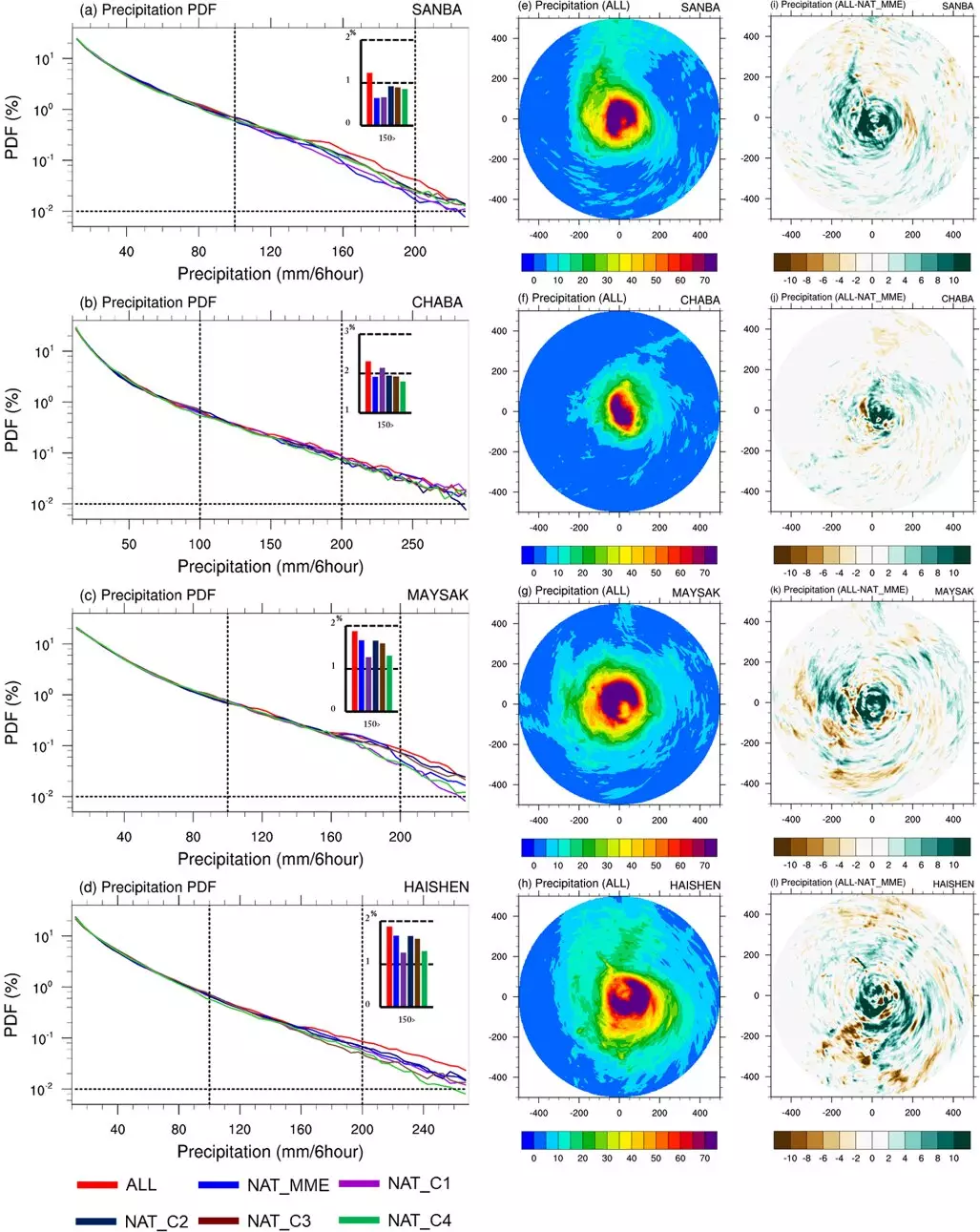Typhoon Hinnamnor, a super typhoon that developed at a high latitude, caused significant damage and loss of life last year. This event, along with an intense downpour in Osong, Chungcheongbuk-do, highlights the increasing frequency and intensity of extreme weather events due to rising global temperatures. To better understand and predict the impact of global warming on typhoons, Professor Seung-Ki Min and Dr. Minkyu Lee from Pohang University of Science and Technology (POSTECH) conducted a pioneering quantitative analysis using a high-resolution climate model.
The damage caused by typhoons and other climate extremes is a significant challenge due to the lack of reliable predictions prompted by global warming. Without accurate predictions, it becomes difficult to mitigate the damages effectively. This research aims to address this challenge by providing a better understanding of the influences of global warming on typhoons making landfall on the Korean Peninsula.
Quantifying the Impact
Previous studies quantifying the anthropogenic warming contribution to typhoons affecting Korea, especially in terms of rainfall extremes, have been limited. To overcome this limitation, the research team designed a high-resolution regional climate model simulation with a resolution of 3-km. This simulation allowed them to investigate the impact of global warming on typhoon intensity and extreme precipitation.
The researchers selected four extremely strong typhoons that made landfall on the Korean Peninsula between 2011 and 2020 for simulation. They compared the current climate conditions with counterfactual conditions without human-induced warming to understand the role of global warming. The findings of the simulation revealed that global warming increased overall typhoon intensity and precipitation.
Interestingly, the impact of warming was more pronounced at maximum typhoon intensity than the average intensity. This suggests that the frequency of powerful super typhoons over East Asia is likely to increase in the future. Additionally, the area exposed to extreme rainfall generated by typhoons expanded due to a warmer climate. The expansion of this extreme precipitation area is attributed to the strengthening of upward motion near the typhoon center and an increase in atmospheric water vapor due to ocean surface warming.
The high-resolution climate model simulations conducted by Professor Min and Dr. Lee provide conclusive evidence of the amplifying effect of global warming on recent typhoons making landfall on the Korean Peninsula. These findings emphasize the urgent need for accurate predictions and effective mitigation strategies to minimize the damages caused by these extreme weather events. By understanding the impact of global warming on typhoons, we can take proactive measures to protect vulnerable communities and ecosystems from their devastating effects. Further research and collaborations are necessary to develop comprehensive strategies to address the challenges posed by climate change and extreme weather events.


Leave a Reply